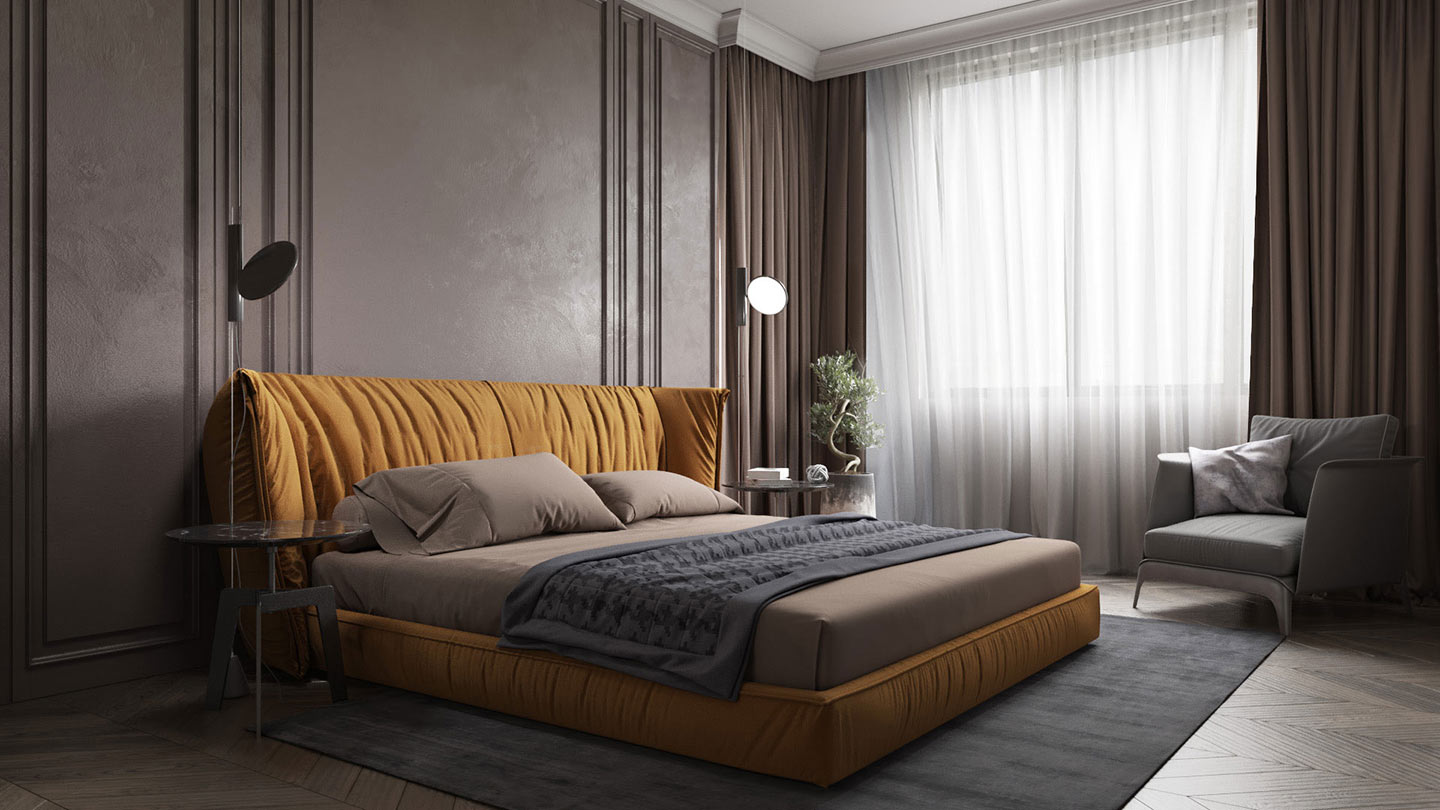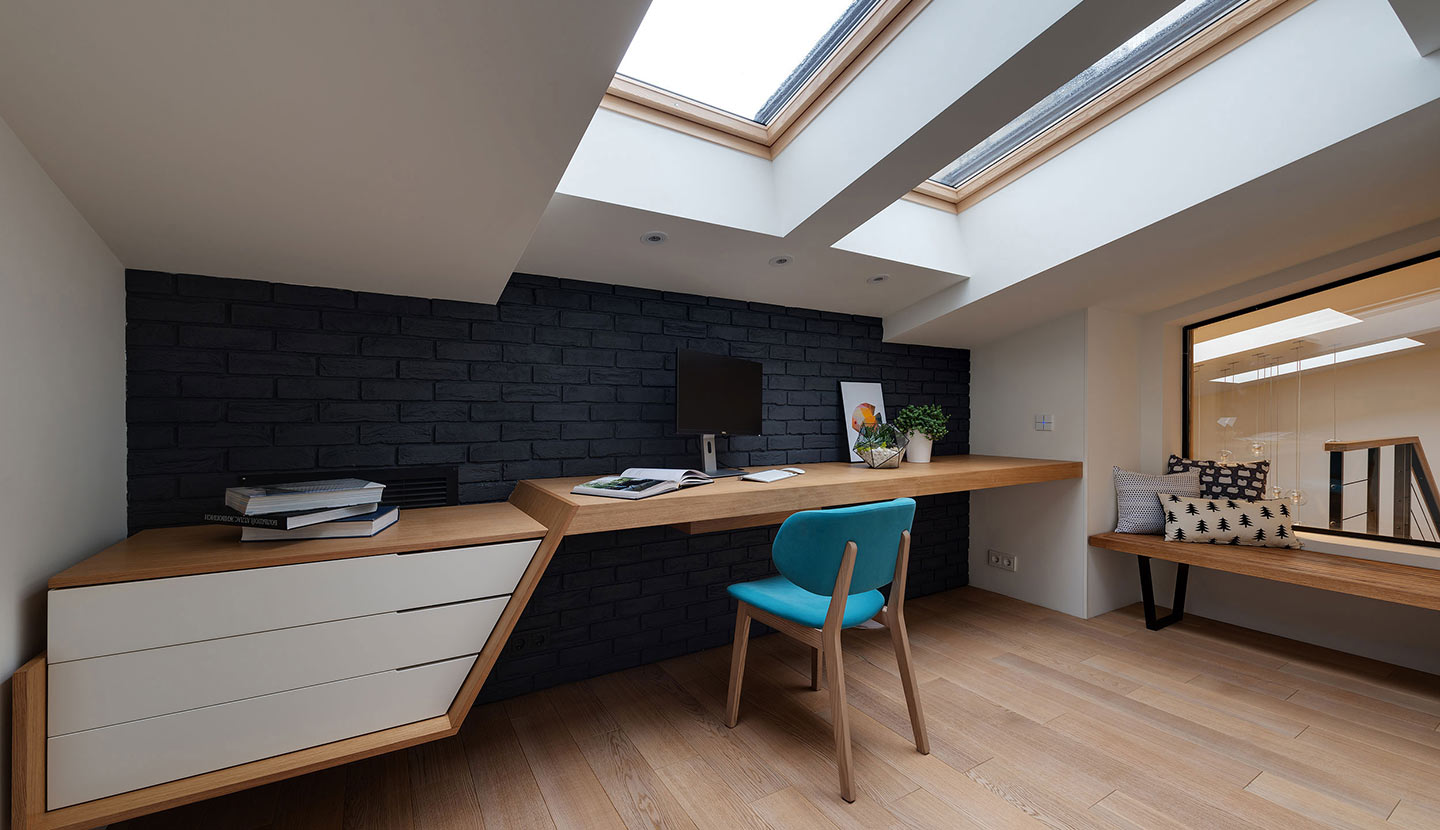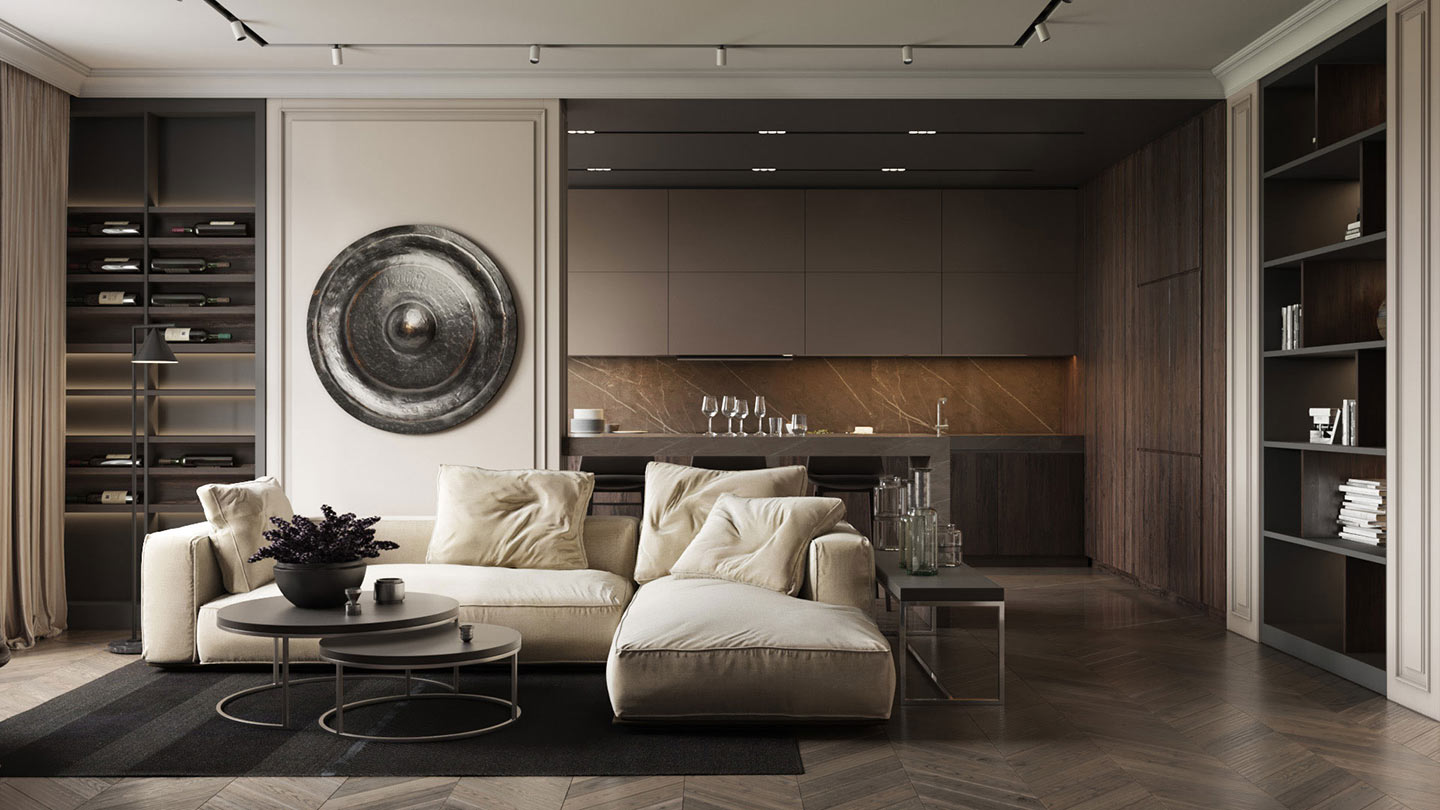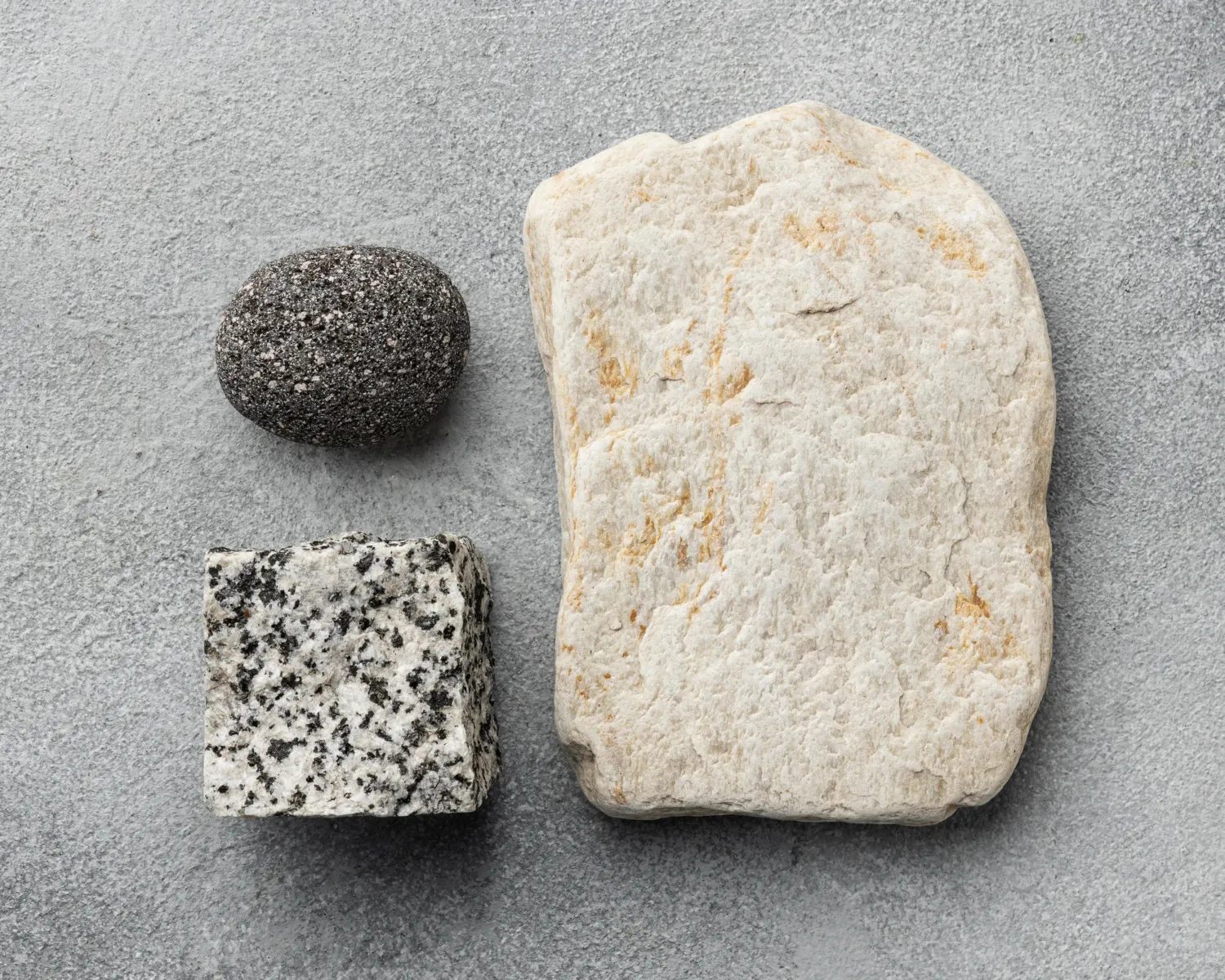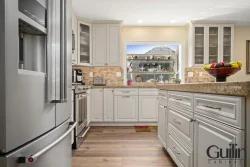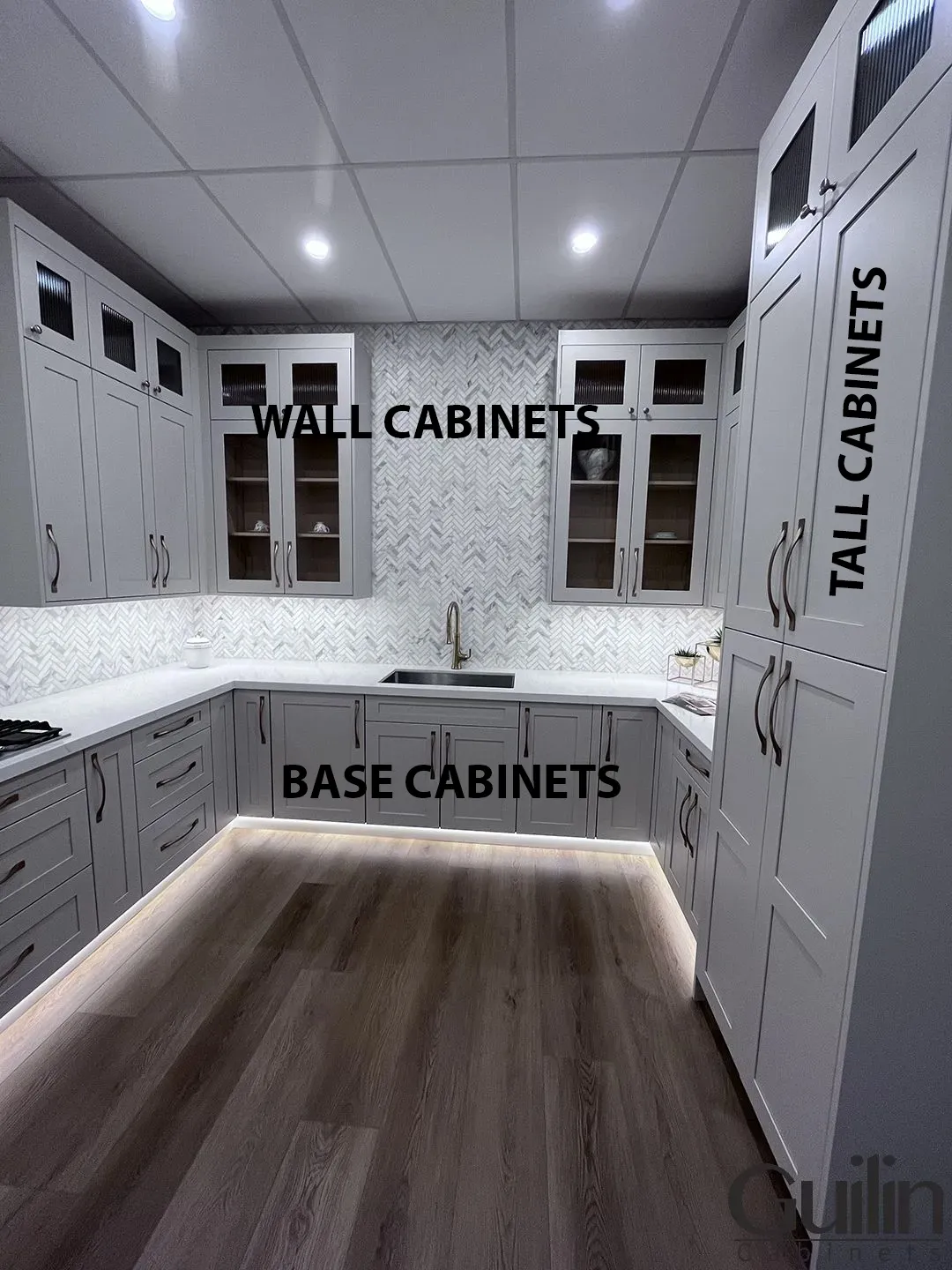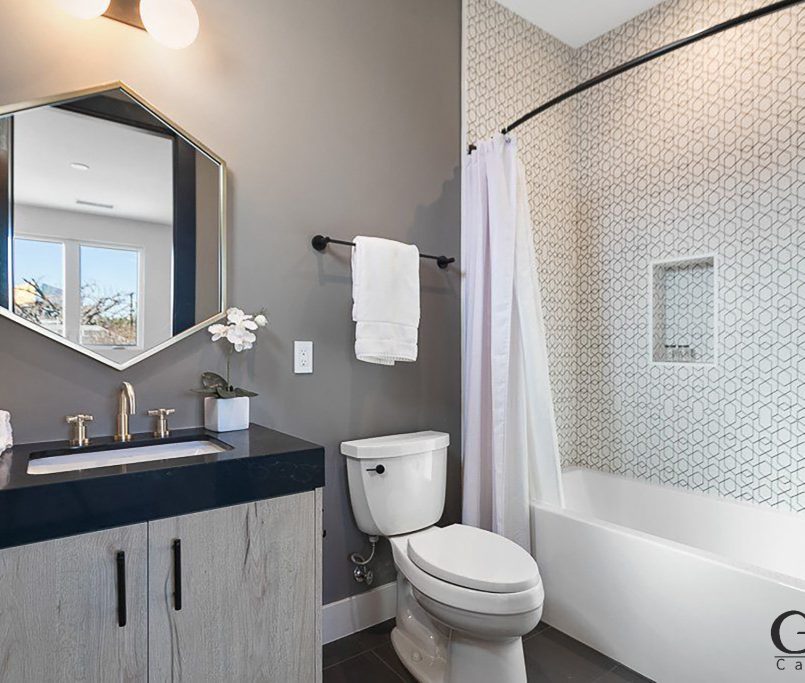Are you considering natural stone countertops for your kitchen or bathroom? Both marble and granite are excellent options. They can be delightful additions to any room, offering stunning aesthetics that will last for years to come. While these materials share some similarities, they also have differences that are important to understand before making a decision. Let’s dive into the specifics of what sets marble and granite countertops apart.
=> Related Article:
- Quartz vs Granite Countertops: Which Is Better?
- Marble or Granite Countertops: Which is Better?
- Laminate vs Granite Countertops: Which Is Better for A Home Kitchen?
About Marble and Granite
Natural stone is a popular option for many homeowners when it comes to building or remodeling their homes. Marble and granite are two of the most popular varieties of natural stone because they each have special properties that make them suitable for so many different projects.
- Marble: This elegant natural stone is a metamorphic rock that is formed from recrystallized carbon and is formed from limestone or dolomite rock that has been subjected to intense pressure and heat as a result of tectonic shifting in the earth’s crust. The intense geological forces cause the original minerals in the rock to recrystallize, resulting in a unique interlocking pattern of large, visible crystals, giving marble its distinctive veining and patterns and creating a material that is both durable and strikingly beautiful.
- Granite: This beautiful natural stone is an igneous rock that is formed from the slow crystallization of molten magma deep within the Earth’s crust. It is composed of grains of compressed quartz, feldspar, mica, and other similar materials. This gives granite its characteristic speckled appearance and makes it slightly harder than marble. As a result, granite is more resistant to scratches and chips, making it a great choice for high-traffic areas, such as countertops and floors.
Marble vs. Granite Countertops
| Aspect | Marble Countertops | Granite Countertops |
|---|---|---|
| Aesthetic Appeal | Elegant, timeless beauty. Smooth texture, a wide range of colors, and patterns | Coarse-grained texture, speckled appearance. Various colors, and patterns |
| Heat Resistance | Sensitive to high heat, prone to damage or discoloration | Highly heat resistant, withstands high temperatures |
| Durability | Moderate durability, relatively soft stone, prone to scratches, and chipping | Exceptional durability, highly resistant to wear and tear |
| Stain Resistance | Porous stone, susceptible to staining, requires regular sealing | Relatively stain-resistant, lighter granites may need sealing |
| Maintenance | Higher maintenance: regular sealing to prevent staining and etching. | Lower maintenance: periodic sealing for stain resistance |
| Price | Generally more expensive | More affordable compared to marble |
| Unique Patterns | Unique veining patterns, each slab is one-of-a-kind | Natural individuality, each slab has distinct variations in color, pattern, and composition. |
| Suitable for | Those who prioritize elegance and timeless beauty | Those who prioritize durability and a wide range of color choices |
| Recommended for | Lower traffic areas, decorative purposes, and those seeking luxurious aesthetic | High-traffic areas, active households, and those seeking durability |
| Cleaning | Gentle cleaning, non-abrasive, pH-neutral cleaners. | Use mild soap and water or specialized granite cleaners, avoid abrasive cleaners |
| Installation | Professional installation, delicate material, prevent damage | Professional installation, heavy material, precise cutting. |
| Versatility | Wide range of colors and patterns to suit various styles and preferences | Wide color palette to cater to different design visions |
About Appearance:
Two materials that are popular for their beauty and longevity are granite and marble. Both offer a range of unique colors, patterns, and textures, making them an excellent choice for your countertop needs.
- Marble countertops: the pattern of marble is more prominent and tends to be larger. The color is more consistent throughout the slab with veins running through concentrated shades of color. The veins add a natural touch to the surface and make it even more visually appealing. For instance, a gray-blue slab of marble may have veins of a darker blue color, while a gray-pink slab might contain veins of a rosy-red hue, adding more contrast and beauty.
- Granite countertops: the display grains of granite countertops are visibly speckled, adding character to the surface. The grains can vary in color, causing the granite slabs to be an exquisite blend of hues ranging from blue, green, orange, pink, red, and so on. The shades are typically found in medium to dark ranges, giving an eye-catching effect to the countertop.

About Hardness and Durability:
Both granite and marble are beautiful and durable options for countertops. They are both beautiful, useful, hard, and durable natural stones but in different ways. However, certain distinctions between the two should be taken into account.
- Marble is softer than Granite. Etching and discoloration might occur if the surface is struck by harder materials or if acidic foods and liquids rest on the surface. Because of its porous nature, avoid placing acidic foods directly on the countertop, and clean up any spills immediately.
- Granite is tougher than marble, so it won’t get chipped or scratched as easily. Especially in frequently used spaces like bathrooms and kitchens, this is important to consider when designing your kitchen.
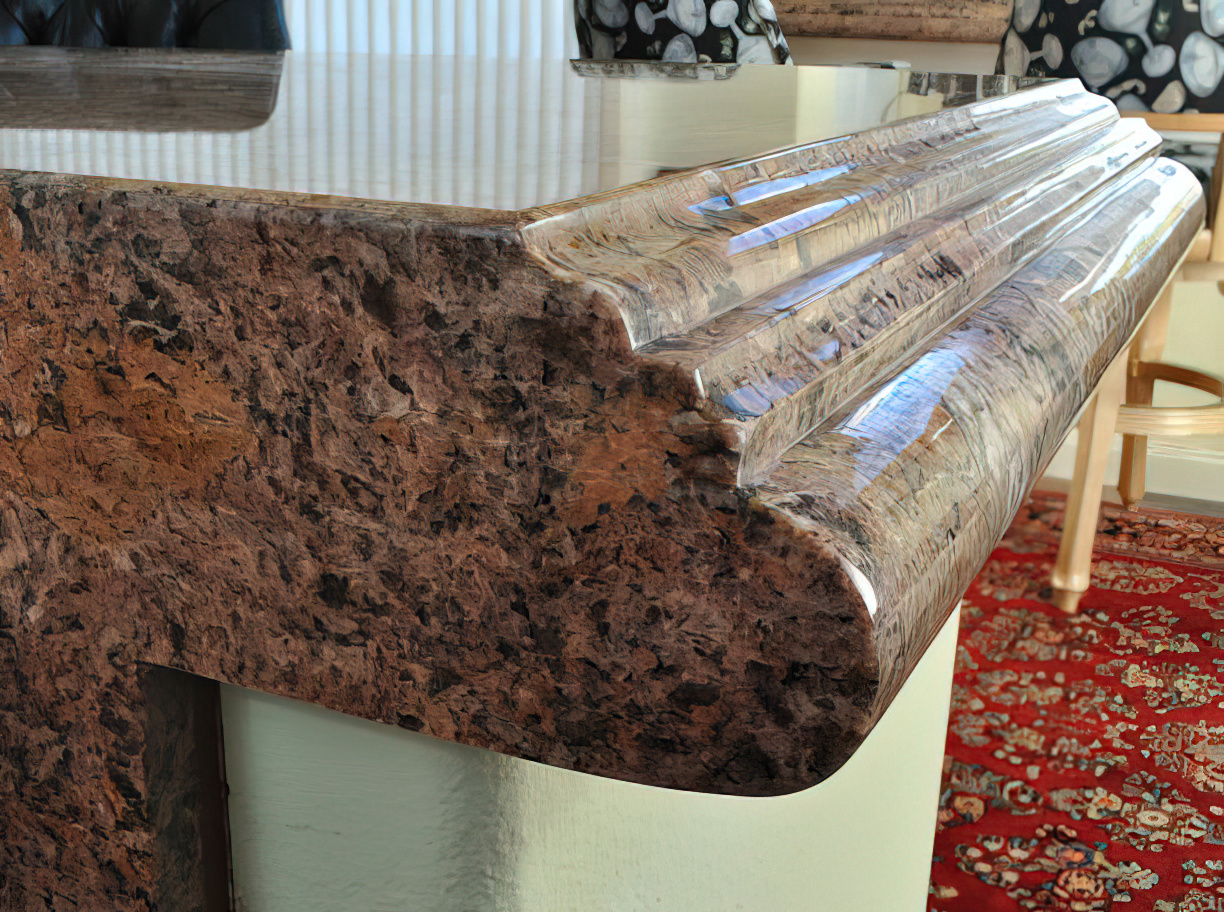
Although neither material will be immediately damaged by direct contact with a hot pan or pot, it is still best to use caution.
About Maintenance:
Granite and Marble are a favorite among homeowners and builders alike due to their durability, unique patterns, and resistance to scratches and stains. However, many people are often left wondering how much maintenance this material requires. After consulting with experts, it is safe to say that:
- Marble is known for its beauty, but it requires moderate to high maintenance. Marble is a porous stone that is much more susceptible to scratching, chipping, and staining. To prevent damage, it is crucial to keep marble surfaces sealed and avoid placing any hot or acidic materials directly on them.
- Granite is relatively low maintenance when compared to marble. It typically requires periodic sealing to maintain its stain resistance.

About Prices:
Marble and granite are two of the most popular countertop materials but they come with different price tags.
- The cost of granite countertops is slightly lower compared to marble countertops. The average price for a granite countertop starts at about $75 per square foot. The best granite countertops can cost up to $175 per square foot.
- The cost of marble countertops starts at closer to $100 per square foot. The best marble countertops can top $320. However, the prices can increase depending on the quality and complexity of the countertop.

Conclusion
On the whole, choosing between marble and granite countertops ultimately depends on your individual needs and preferences. If you prioritize elegance, uniqueness, and the timeless beauty of natural stone, then marble may be the perfect choice for you. However, if you prefer a more durable, low-maintenance option that can withstand the wear and tear of daily use, granite might be the better option.
Both marble and granite have their own set of advantages and disadvantages, so it’s important to carefully consider factors such as cost, maintenance, and aesthetic appeal before making a decision. Ultimately, the best countertop material for your home will be one that aligns with your lifestyle and design preferences while also fitting within your budget.
FAQs & Misconceptions About Marble vs Granite Countertops
Which one is more expensive, marble or granite countertops?
Marble countertops are generally more expensive than granite countertops. The cost of marble is higher due to its luxurious appearance and the additional care required to maintain its beauty.
Can you customize the appearance of marble and granite countertops?
Both marble and granite countertops offer a wide range of color and pattern options to suit different design preferences. Many suppliers provide customization services to tailor the countertops to your specific needs.
Debunking Common Myths
Not all that glitters is gold, and the same goes for popular misconceptions about marble and granite countertops. An enduring myth is that marble is more prone to staining than granite. While it’s true that marble is more susceptible to stains from acids like lemon juice or vinegar, with proper sealing and maintenance, it can be just as durable as granite. Another common myth is that granite countertops are completely heat-resistant, leading many to believe they can place hot pots and pans directly on the surface. In reality, both marble and granite can suffer from thermal shock if exposed to extreme temperature changes, so it’s best to use trivets or hot pads to protect your investment.
Another prevalent misconception is that marble countertops are high maintenance compared to granite.
While it’s true that marble requires regular sealing to protect against stains, granite is not maintenance-free either. Both types of stone need appropriate sealing and regular care to maintain their beauty and durability over time. Lastly, a popular belief is that marble countertops are more expensive than granite. The reality is that the cost of each material can vary depending on factors such as quality, rarity, and installation complexity. It’s vital to consider all aspects, including long-term maintenance costs, before making a decision based solely on price.


